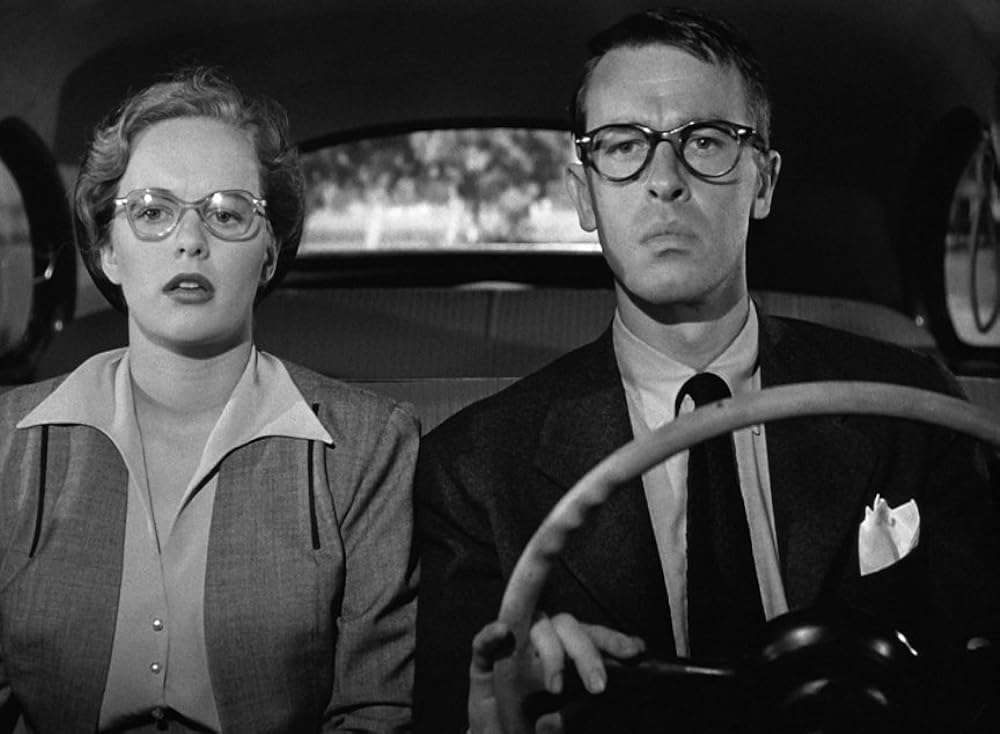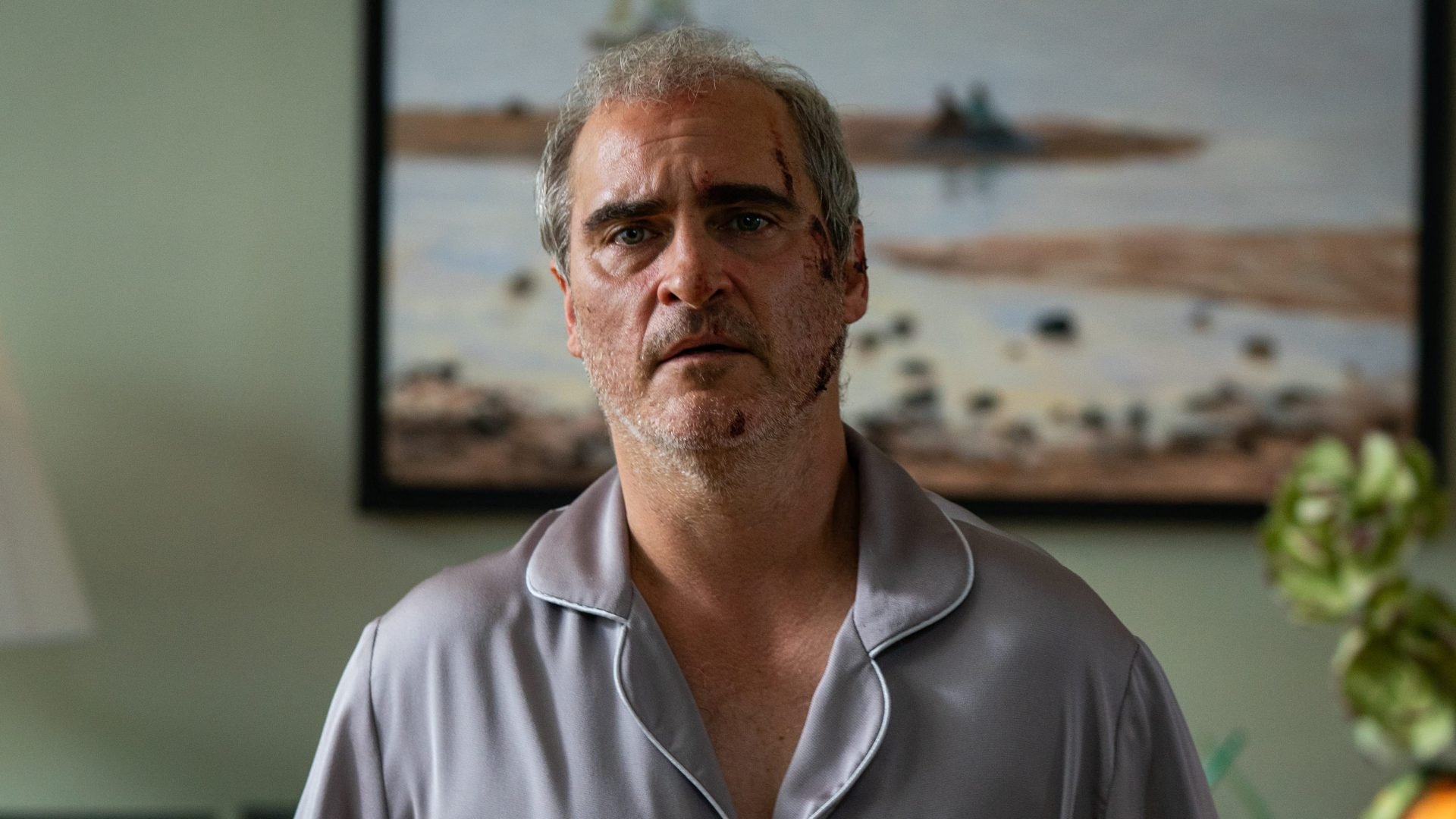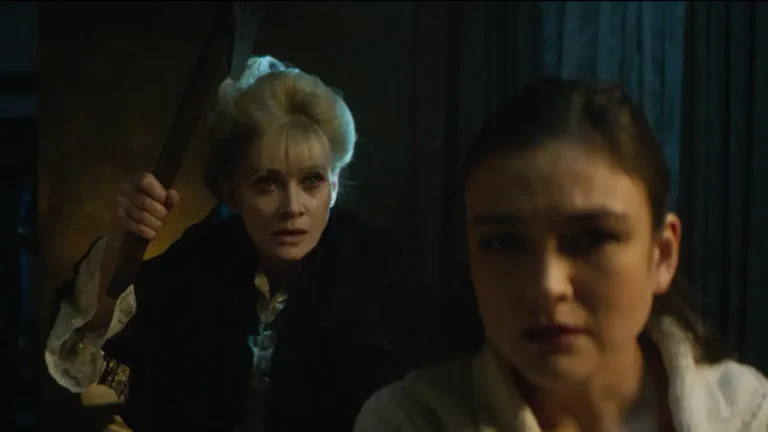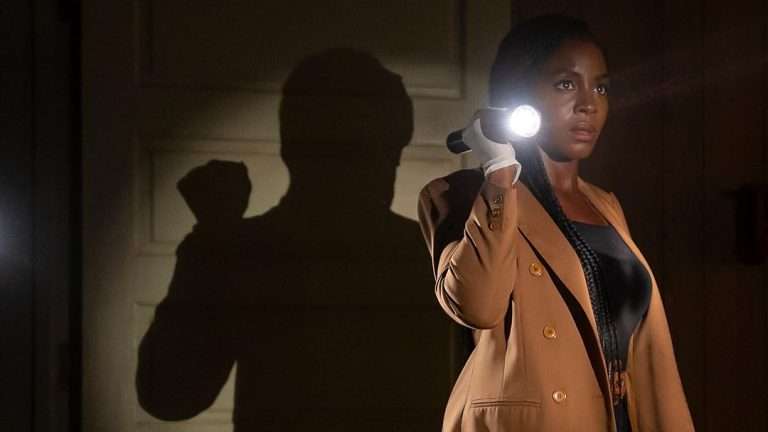Gun Crazy is a precursor to Bonnie and Clyde (1967) and the sub-genre of ‘Couple on the Run’ films, which, like any film noir or neo-noir, is bound to end in tragedy. With impeccable editing that smoothly transitions across tense blocks of the screenplay, the movie establishes both a rapid-fire plot of thrills and finds time to reflect on the themes and psychology of its lead protagonists.
Directed by Joseph H. Lewis and written by the HUAC blacklisted Dalton Trumbo (under a pseudonym), the screenplay is propelled by an incredible control of craft. Gun Crazy opens on a rainy night, where a gun displayed in a shop seduces young orphan Barton ‘Bart’ Tare (Russ Tamblyn). A trance takes hold of him as he shatters the shop window, urged to make it his own, only to be instantly caught by the local sheriff. A trial plays along where his sister and friends attempt to justify his actions in flashback, piecing together his relationship with guns. The economic writing is stellar as key points are made about Bart’s early obsession with firearms and his struggle with his conscience against their use.
Years pass, with Bart (John Dall) returning to his hometown, a man reformed, in control of his trigger impulses. Almost instantly, he makes the acquaintance of Annie Starr (Peggy Cummins), a sharpshooter at a traveling circus in town. Like every femme fatale, it’s clear that she will steer him to his inevitable doom. Joining her on the road, it is evident the circus isn’t enough to hold their love and desires.
The writing and Cummins’s astute performance establish early on the ambitions that will drive them to a life of crime. What’s fascinating is how Cummins portrays the classic femme fatale with shades subversive to the role. Where most femme fatales project a cruel siren hidden by the thin veneer of doe-eyed seduction, Cummins plays Annie with a cold balancing act between opacity and transparency. Under that surface, she slowly reveals layers of madness that make it difficult to tell if she is a victim of circumstance or a sociopathic mastermind.
This also adds a consistent undercurrent of pressure to her relationship with Bart, threatening to end at any moment in that foreseeable tragic ending. The screenplay comes to its most extended and crucial segment when they escape from the circus. In technical craft and writing, it acts as a microcosm for the entire film and the skills of its makers, especially Lewis. A quick montage of the honeymoon phase begins with them buying rings, ending sadly with having to pawn them off.
Under Cummins’s dexterity as an actor, Annie doesn’t entice Bart into a life of crime, but more like she thrusts him there with force. The sub-textual play of gender roles is a bold touch Trumbo adds, buoyed by John Dall’s equally enigmatic performance. In that case, the titular gun is a potent metaphor for power, not just the physical and mental, but the sexual as well. Annie’s trigger-happy demeanor, as well as her willingness to wield it in a way Bart cannot, showcases her control over him. This is shockingly true, particularly when she acts coy and unnerved about her inability to handle the gun, firing at any moment of grave danger for the couple.
With each swiftly paced montage, the film is followed by well-paced moments of action and brief breaks that allow the screenplay to mine their clashing psyches. Lewis’s control over the craft and the story he tells through it is best on display during a heist sequence right after their montage of crimes is shown. The camera lingers for a unique one-take made all the more remarkable because it was shot in 1950 with a shoestring budget. The camera stays inside the car as the duo makes a daring daylight raid, nearly getting caught and eventually chased by the police. The final frame before the cut is of Annie displaying a perverse pleasure in living such a dangerous life.
It isn’t just the editing and camera work that is so uniquely brilliant; it also adds a lot of weight to the narrative. For the most part, this segment finds the couple free of judgment as they drive across open spaces. However, the blocking and framing also capture them in constant struggle, trapped within the confining space of the car. This allows the viewer to see from Dall’s performance in close-up shots his fight with his conscience while also being in the thrall of Annie and her weapon.

For anyone familiar with the tone, it is pretty evident where the aforementioned tragedy will strike. The couple’s wishes ultimately result in the promise of a final heist that unfortunately goes awry as the law circles in on them. The audience expects a betrayal, but the writing subverts this long enough to keep the viewer on edge. Trumbo’s screenplay really milks the post-war sentiment of paranoia on the basis of the gender power struggle and the escalating tensions of an economic divide.
With the transition into the following segment, Bart and Annie gain their freedom, ever so briefly. Once more, though they are confined, this time in languid domesticity – the first shot of the couple inside a house behind a checkered frame window echoes this sentiment powerfully. Past sins continue to haunt their souls, forcing them back on the run.
The screenplay returns full circle, with Bart back to his hometown and lost without those who vouched for his character in the opening. Annie pushes him to the brutal edge, as he does to her, for escape. By subverting our expectations earlier, Trumbo and Lewis are able to make the predictable tragic ending profoundly disturbing.
Inevitably, we return to the gun as Bart espouses the toxic nature of their relationship. A gun and bullets become an allegory for the couple’s inability to exist, function, and act without one another. The two are trapped in a swamp surrounded by a fog, incapable of seeing a path through. The setting, too, acts as a symbol for their directionless future, how the sins they have committed and their obsession over the gun have shrouded their future.
The climax becomes a metaphor for the tenuous grasp and instability of power that ruins them when Bart takes control of the gun and ends Annie’s life. As is typical of the film’s bleak tone, order is restored even if man and woman must die. Using film noir and the imbalance of power in gender dynamics, Lewis and Trumbo reflect on the need for Gun control. It’s a stirring message hidden intelligently within the thrilling movie, which remains relevant to the modern American landscape.



![Limbo [2020] Review – An Uneven yet Captivating Dramedy about Asylum-Seekers](https://www.highonfilms.com/wp-content/uploads/2021/07/Limbo-2020-768x561.jpg)

![A Personal Journey with Martin Scorsese Through American Movies [1995] Review: A Must For Film Fanatics](https://www.highonfilms.com/wp-content/uploads/2020/06/martin-scorsese-1-768x564.jpg)


